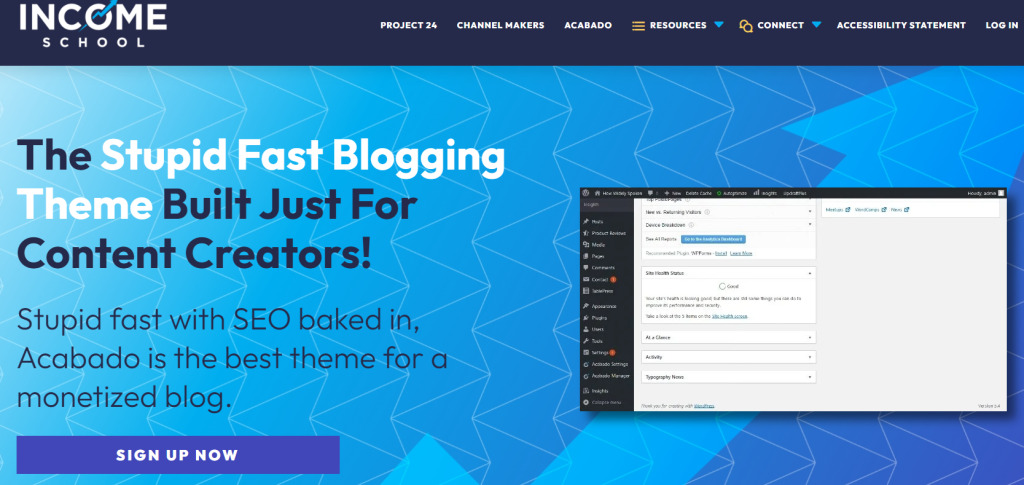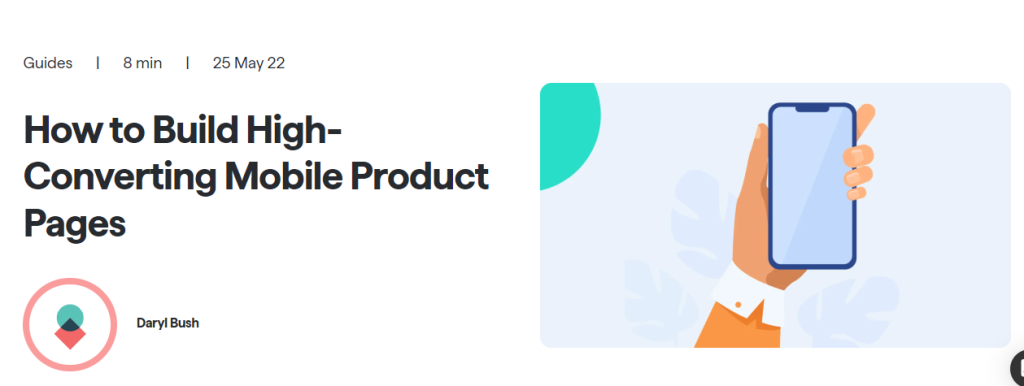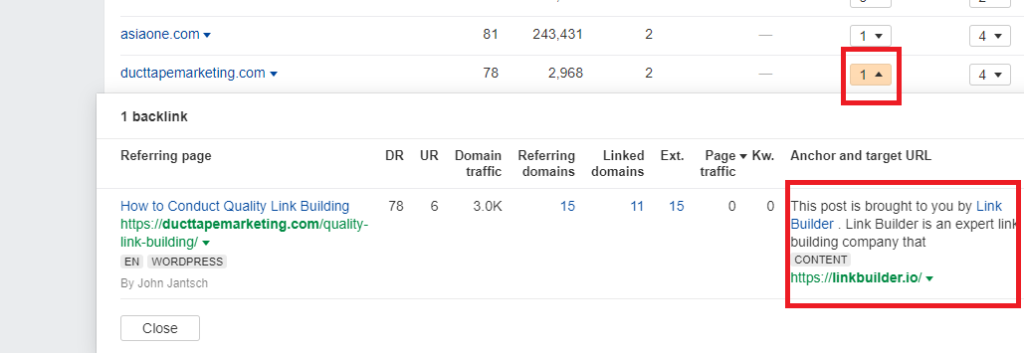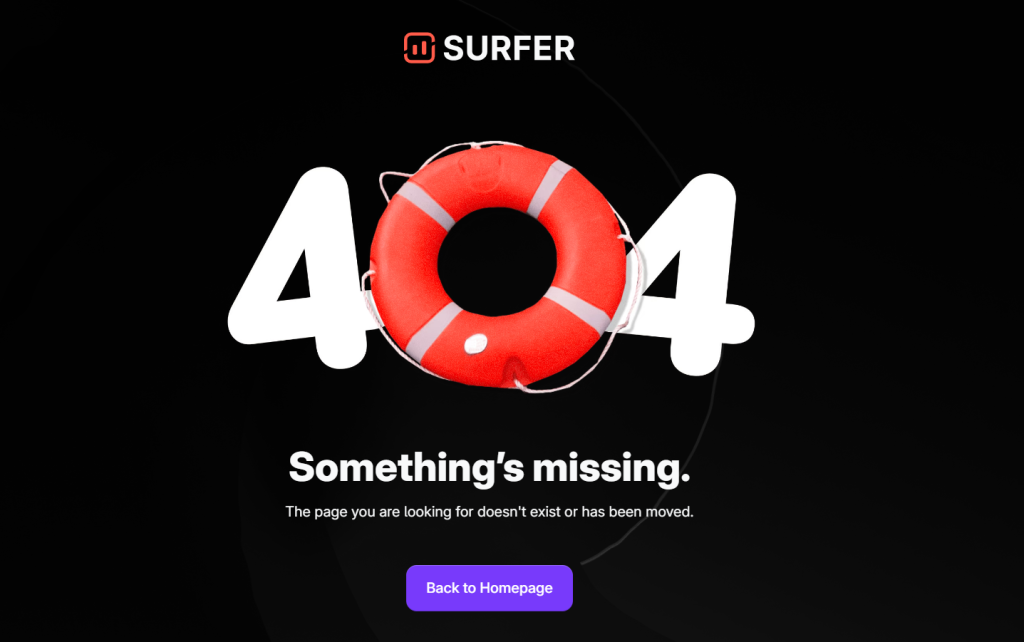
In the world of search engine optimization (SEO), building high-quality backlinks is critical to gaining an edge over your competitors.
Pages that possess a high number of backlinks tend to secure higher rankings compared to pages with fewer backlinks.
Remarkably, the top-ranking result in Google typically boasts an average of 3.8 times more backlinks compared to positions #2 through #10.
This is critical because the top three results in Google tend to get nearly 70% of all clicks, while results on page two get almost no clicks.
This article explains what high-quality backlinks are and how they can elevate your website’s rankings in search engine results pages (SERPs), boost traffic, and contribute to overall online success.
Why Are High-Quality Backlinks Important?
Imagine you type a query into a search engine like Google. When choosing what to show you in its results, it considers the backlinks pointing to relevant pages.
People usually link to your content because they like it or think it would be useful for their readers. In other words, they think it’s valuable.
Therefore, search engines consider your backlink profile because it indicates whether your content is good and worth showing to users.
In particular, search engines take into account:
🔗 The number of backlinks pointing to the page
🔗 The number of backlinks pointing to the domain
🔗 The number of domains linking to the page
🔗 The number of domains linking to the domain
🔗 The quality of the links mentioned above
Studies have revealed a correlation between the number of domains linking to a page and its ranking in search results.
In the next section, we explain what we mean by “quality.”
What Are High-Quality Backlinks?
High-quality backlinks tend to be:
✅ Relevant
This is the most important feature of high-quality backlinks. The more relevant a backlink is, the more likely it is to improve your ranking.
For example, if you run a gardening website, a link from a lawn care supplier will be more valuable than one from an interior design magazine.
It’s important to note that the relevance of both the domain and the page that links to your page is considered. In other words, a link from an interior design website might make more sense if the linking page features garden room decorating tips.
In fact, the recent leak of Google search documents indicates that the topical relevance of backlinks is critical. Some SEO experts have even recommended removing irrelevant links.
✅ Authoritative
High-quality backlinks come from authoritative websites. These websites are usually trusted and well regarded by others in their industry. One of the main ways search engines determine this is by the number of backlinks that points to a website.
In other words, high-authority backlinks come from websites that themselves contain many backlinks.
SEO tools are a good way to determine a website’s authority. Most have some sort of domain authority score that measures the number and quality of backlinks pointing to a site.
For example, Ahrefs uses domain rating (DR). You can quickly find a website’s DR by typing its URL into Ahrefs’ site explorer.

Scores like DR measure authority on a scale of 1-100, with 1 being the lowest and 100 being the highest. To build high-quality links, you should target websites with a higher DR than your own—the higher, the better!
✅ Contextually relevant anchor text
Anchor text is the words on the page that you click on to follow the link.
They are often highlighted in blue and underlined. The best type of anchor text will be relevant to the text that surrounds it.
Here’s a good example: Someone linked to our link insertion services. The article is a guide to blogging and, given the context of the sentence, it makes perfect sense.

✅ Natural
Imagine a website is relatively new and has zero backlinks. Then one day it suddenly has 20 backlinks—all of them guest posts and all from similar websites.
Does that sound natural? Or does it sound like the website owner has purposefully been link building?
High-quality backlinks are built because the owner of the linking site likes your content. This results in a varied backlink profile with different types of links from various websites.
A natural, varied backlink profile is more likely to boost your rankings than one that results from buying or exchanging large numbers of links.
✅ Dofollow
Nofollow is an HTML tag. One of its purposes is to tell search engines not to consider a link for SEO purposes. The opposite of a nofollow link is a dofollow one.
Dofollow links tend to provide a much greater ranking benefit than nofollow links. It’s perfectly normal for websites to have a mixture of nofollow and dofollow links and nofollow links can still provide some SEO benefits.
The easiest way to tell whether a link is nofollow is to right-click on a page and click “Inspect.”

This will allow you to view the page’s HTML code. Either hover over the link or search for it in the page’s HTML code. If the link is nofollow, then you will see some code saying rel=”nofollow.”

✅ Recent
The recent Google search documents leak also showed that the search engine values newer links more highly than older ones.
This means that your existing backlink profile will gradually degrade in value over time. This is why link building is critical to maintaining your rankings.
✅ High traffic
If a website links to you, then some of the people who see your link are likely to click it. High-quality backlinks often come from websites with high organic traffic, which sends many visitors to your site. This exposes you to new audiences.
While focusing on high-quality links is crucial, it’s also important to acknowledge that medium-quality links can still provide positive momentum.
However, it is crucial to avoid low-quality or spammy links, as they can have adverse effects on your online presence. You should always prioritize quality over quantity.
In the next section, we explain what poor-quality backlinks look like.
What Makes a Backlink Low-Quality?
Undesirable backlinks are those deemed spammy or irrelevant by search engines.
Leading search engines such as Google and Bing employ sophisticated algorithms to identify and penalize websites that build such links.
Here are some examples of what counts as poor-quality backlinks:
⚠️ Link farm backlinks
Link farms are websites that exist only to make money selling links. They usually have low-quality content that is often completely generated by artificial intelligence (AI).
They also tend to cover broad, vague topics like “business” or “technology.” This means they can publish content on anything and sell links to anyone.
Surprisingly, many link farms have high DR. This is because they have been more ethically run in the past and built up good authority. However, at some point, the people running the site realized they could make more money selling links than producing valuable content.
Because link farms produce such poor content, they gradually lose their ranking power over time. Sometimes Google issues these websites with a penalty, which means you’ll get no ranking benefit from the link.
Because of this, it’s best to avoid building link farm backlinks.
⚠️ Private blog networks
This is when someone owns several blogs that link to each other to manipulate their authority. The owners then use this apparent high authority to sell links.
The dangers here are similar to those posed by link farms.
⚠️ Forum and comments spam
This is when you post links to your website on forums and in the comments section at the end of articles.
These approaches can be legitimate link-building techniques, as long as they are done on relevant websites and provide value to others.
However, simply posting a link to your website in as many places as possible will be a waste of your time—Google will most likely ignore the links.
Is It Bad to Buy Backlinks for SEO?
According to Google Search Essentials, buying backlinks is against its guidelines. This means that the search engine could ignore the backlinks you buy. You could even be issued with a penalty and see your rankings drop.
But in reality, paying for links is common practice—whether by paying a website owner directly to publish a link or paying someone indirectly to build backlinks for you.
In fact, in some niches, it’s impossible to run a successful link-building campaign without buying at least some links.
Paid links form part of a strategic approach to enhance a website’s search engine optimization (SEO) by targeting specific keywords. You can establish valuable relationships with other websites, resulting in increased traffic and heightened exposure for your own site.
Purchasing backlinks can be an acceptable approach if:
💰 You buy them from high-quality, relevant websites.
💰 You publish content that adds value for audiences.
💰 You vary the types of links that you build.
💰 You build genuine relationships with other website owners.
By adhering to ethical practices, you can avoid a penalty, safeguard your website’s reputation, and ensure long-term success in the ever-evolving landscape of SEO.
How Do I Get High-Quality Backlinks?
A recent study showed that around 95% of all pages do not have any backlinks.
If you’re looking for an edge over your competition, gaining high-quality backlinks is the first place to start.
Produce high-quality content
Earlier we said the reason people link to your website is because they like your content.
So it makes sense that one of the best ways to get high-quality backlinks is to create great content and let the links come to you!
This approach is sometimes known as creating “linkable assets.” And it doesn’t just involve written content—you can create anything that your audience might find useful.
Examples include:
- Free tools
- Videos
- Infographics
- Webinars
- Round-ups
- Surveys
- Research
Linkable assets work well because they lead to completely natural backlinks. You’ll also strengthen your brand as people begin to see it as a trusted authority in your niche.
The downside is that you’ll have to promote your content to generate links. This can take some time, especially if you are a small or new website.
Here’s an excellent example from online digital marketing learning provider Income School. They created their own WordPress theme, which is designed for their audience of content creators.

It has generated 962 backlinks from 258 domains!

How to create linkable assets
Creating linkable assets can be time and resource-intensive. But once you have created something, it can generate links online forever.
Here’s how to create them:
1. Brainstorm ideas
Think about your target audience and the problems they face. How can your expertise help them? What format is best for delivering this help? For example, there’s no point in developing a smartphone app if your audience is older and therefore less likely to use smartphones.
It’s also worth thinking about what your competitors have produced. Is there something that you know could be done better?
2. Use professionals
For linkable assets to be valuable, they need to be produced by professionals. This can be expensive if you don’t have in-house expertise.
For example, Income School’s WordPress theme probably required:
💡 A graphic designer to come up with the theme’s look and feel.
💡 A developer to create it.
💡 A writer to produce promotional assets.
💡 A project manager to manage the project.
You can hire freelancers for all these roles on platforms like Upwork or Fiverr. However, it can take some time to identify capable freelancers. In many cases, it’s better to hire a digital marketing agency to produce linkable assets for you.
3. Promote your assets
Promoting linkable assets takes time and resources, but it’s a critical part if you want to start generating backlinks.
One way to do this is with outreach (we’ll explain how to do this later in the article), but you may also want to promote your linkable assets through:
📢 Social media
📢 Blog articles
📢 Press releases
📢 Pay-per-click advertising
Here’s an example of how security software provider Vanta is advertising its ISO 27001 compliance checklist on LinkedIn. This will help drive traffic to the content and generate backlinks.

Request guest blogging opportunities
Guest blogging is when you write a blog post for someone else’s website. Usually, you get to include a link to your website.
It’s a good strategy because it gives you a lot of control over where you build backlinks. You can target high-authority, relevant websites that result in powerful backlinks. You can also produce great content that will generate organic traffic and reflect well on your brand.
Here’s one we recently published on involve.me

The company provides a digital marketing tool, so it’s relevant, and it has a DR of 80, which makes it very authoritative.
Here’s how to find guest blogging opportunities:
1. Compile a list of blogs relevant to your target audience
There are a couple of ways to do this:
Use Google search operators
For example, type into Google your niche + “guest post” (or something similar). This will bring up relevant guest posts in search results.
Let’s imagine you want to target websites that accept guest posts on gardening. The results below include results from guest posting websites and round-ups of relevant guest posting sites. Both are useful.

Use Ahrefs
Ahrefs includes a powerful tool called “Competitive Analysis.” It lets you see which websites link to your competitors, but not you.
Here’s how to use it:
Type your URL into Ahrefs’ Site Explorer and hit enter. Then select “Content Explorer” from the top toolbar.

Select “referring domains” and type your URL into the top box. Type your competitors’ URLs into the lower ones. Click “Show link opportunities.”

You’ll be presented with a list of websites that link to your competitors but not you. Select “Dofollow” and then scroll down the list and try to find a guest post. You can do this by clicking on the dropdown menu arrows on the right.

2. Focus on best-fit opportunities
Now you should have an extensive list of guest posting sites. Thoroughly study the writing style and tone of each blog. This step will help you understand their content preferences and ensure that your proposed topics are a good fit. Discard blogs that are not a good fit.
3. Create compelling ideas
Craft 2-4 compelling article ideas, including titles and brief summaries outlining what they would cover. This is to demonstrate your understanding of the blog’s audience and content needs, which increases the likelihood of a successful guest blogging arrangement.
4. Perform outreach
Reach out to the website owner to pitch your ideas. We’ll explain how to write a good outreach email later in this article.
Become a source for reporters and bloggers
Digital PR backlinks are when you get mentioned by media outlets such as online newspapers.
These types of websites have very high authority and are trusted by search engines. Therefore, backlinks from these sites are some of the most powerful you can build.
But getting coverage is hard. Journalists are inundated with PR requests and will only cover stories that offer genuine value to their readers.
This becomes easier if you build relationships with journalists—but that takes time.
One of the easiest ways to build PR links is to let media requests come to you by using platforms like Connectively (formerly known as HARO).
Connectively allows you to filter a list of journalists’ questions. You then respond to the ones you can answer. If the journalist likes your response, they will publish it with a link to your website.
Here’s what a typical Connectively question looks like:

Here are some tips for a great Connectively response:
📰 Try to answer only relevant questions
For example, don’t answer gardening questions if you’re link building for a digital marketing agency. Your response would probably get ignored and even if you do land a backlink, it wouldn’t be relevant to your business, decreasing its value.
However, it’s okay to answer more general questions. Connectively often has questions regarding productivity or project management, which would suit a deadline-driven business like digital marketing.
📰 Deliver value
One of the reasons HARO became Connectively is that journalists were getting tons of poor-quality responses.
Link builders would answer questions they had no expertise in by submitting responses based on Google searches—something which the journalists could have done themselves. Even worse, many were simply submitting AI-generated responses.
Your response won’t get picked up unless you have genuine expertise and you can offer something original and useful.
📰 Respond quickly
Connectively gives you a deadline, but most journalists will publish the first good response they get. Therefore, you should respond to questions as quickly as possible. Don’t waste your time on responding if the deadline has passed or is about to pass.
📰 Briefly introduce yourself
Begin each response by briefly explaining who you are, what you do, and what your area of expertise is.
For example, you might begin with:
Hi [journalist’s name]
I’m Matt Diggity, an award-winning SEO and founder of link building agency Authority Builders.
Here are my thoughts…
📰 Answer the question clearly and succinctly
Don’t go off on a tangent or give the journalist unnecessary background information. Instead, answer their question directly and provide them with something useful and original.
For example:
In my experience, building backlinks is one of the best ways to boost sales. Most of our clients report a 25% uplift within a year of launching their link-building campaigns.
Offer to provide them with more information if you think they might need it. This also gives the journalist the chance to ask follow-up questions.
📰 Follow instructions
Journalists usually ask for specific information. For example, in the coffee maker example above, the journalist sets five questions, which you should address individually.
If another respondent answers the journalist’s question more accurately and comprehensively, they are more likely to get published.
📰 Answer lots of questions
In our experience, HARO generates a success rate of around 1/10. So you’ll have to answer many questions before you earn a backlink. Since Connectively has become a paid platform, it attracts fewer users, which means the success rate may now be higher.
Fix broken links
Broken links are when a backlink stops working, usually because the page it links to is removed.
This results in the user being sent to a 404 page. Here’s an example of what that looks like from Surfer SEO.

Broken links provide a great link-building opportunity because you can contact the website owner and suggest they replace the missing content with your own.
This benefits all parties: the site owner fixes a problem on their site, you get a backlink, and users get a seamless experience.
How to build broken links
There are several ways to find broken link-building opportunities, but the easiest is to use Ahrefs.
Begin by choosing a site in your niche with many backlinks. For this article, we’re going to target Search Engine Journal.

Type the target site’s URL into Ahrefs’ Site Explorer. In the overview, click “Broken backlinks” in the sidebar menu.
You’ll now be shown a list of broken links pointing to that website. Select “Dofollow” and click “Show results” to ensure you only see dofollow opportunities.
Now scroll down and try to find a broken backlink that your content could replace. Alternatively, you could produce new content.
Here’s one example. This article links to a Search Engine Journal article on SEO monitoring tools. We could suggest our own article on monitoring tools instead.
Finally, you need to reach out to the site owner and propose your replacement article.
Harness the power of influencers
Another great way to build high-quality backlinks is to collaborate with influencers.
Try to think of some big names in your industry and find a way to help them create interesting content for their audience.
A good example of this in the retail world is unboxing videos. Here’s a good example: Guitar brand Fender sent a guitar to popular YouTuber Robert Baker.

This video has been shared 3,500 times and includes links where people can buy the product online.
Here are some tips to leverage influencers and acquire authoritative backlinks:
🤝🏻 Identify reputable brands and influential individuals within your industry who align with your values and target audience.
🤝🏻 Establish genuine and meaningful relationships by engaging with their content, providing valuable insights, and building trust.
🤝🏻 Explore collaborative opportunities such as guest blogging, co-creating content, or participating in joint events to tap into their audience and generate quality backlinks.
🤝🏻 Leverage the reach and credibility of brands and influencers to attract natural backlinks from their networks and followers.
The key is prioritizing authenticity, relevance, and mutual value in your interactions. This ensures that the backlinks you acquire are high quality and provide long-term benefits to your SEO strategy.
High-Quality Backlinks Require High-Quality Outreach
Outreach is when you contact other webmasters to build relationships and ask them to link to your website.
However, outreach is tough. Some webmasters receive a flood of link-building requests daily, and others assume such emails are scams and ignore them.
Here’s a brief overview of the outreach process:
1. Find contact details
Visit the target website and try to find the name and contact details of the person in charge of its content. For smaller companies, this could be the CEO, while at larger ones, it’s likely that there’s a content manager.
It’s important to find a name, because this will allow you to personalize your message when you write it.
If you have a lot of websites to reach out to then, you can use tools like Hunter.io.
Hunter can quickly scrape websites and find the names of relevant people at the business and provide you with their contact details.
2. Research the contact
Try to find some recent information about your contact or their business. For example, perhaps they have recently won an award or gained a new client?
3. Write your email
Now it’s time to write your email. Once again, if you’re writing a large number of outreach emails, then you may wish to use a tool to simplify the process.
For example, Pitchbox enables you to create email templates with personalized elements like names or website URLs for each website.
Here are some tips for writing a good outreach email:
✅ Create a compelling subject line: Include the contact’s name and make it relevant to their audience. Keep it to 6-10 words.
✅ Personalize your message: As mentioned before, address the person by name and mention something about them or their company that you found interesting.
✅ Briefly introduce yourself: In one sentence, tell the contact who you are and mention your area of expertise.
✅ Highlight the benefit to their audience: Explain why your link will benefit their readers. Perhaps you have new data that reveals an exciting new industry trend? Let them know this early on in the email to hook them.
✅ Ask for a link: Some outreach emails are vague. You need to give the reader precise but polite instructions. For example: “I’d love you to link to our research report—please respond to this email to let me know how we can make this happen.”
✅ Keep it short: The shorter the email, the better. 150 words are ideal, and don’t exceed 250.
Here’s how this might look when you bring it all together:
Subject: [Name], new research reveals surprising new SEO trends
Hi [Subject’s name],
I recently came across your article on the most important Google changes for SEOs and was impressed by how you broke down the algorithm updates.
I’m Matt Diggity, and I specialize in link building. I thought your audience would appreciate our new research on the Google Helpful Content Update.
We’ve identified five things that sites that have successfully recovered from the update, do.
I think your readers would find this post valuable, and I would love it if you could share it with them.
Please respond to this email and tell me if this is something you’d consider—I’d love to make it happen!
Best regards,
[Your Name]
[Your Website]
Bonus Tip: Hire an Agency to Build High-Quality Backlinks for You
Building high-quality backlinks is well worth the effort, increasing both your organic traffic and brand exposure.
But it takes a lot of time and resources—so what are your options if you are busy or have a small team?
One option is to hire a link-building agency like Authority Builders. We’ve been helping companies build high-quality backlinks since 2016.
We can manage all aspects of your link-building strategy and execution, ensuring you get the best backlinks for minimum effort.
Each of our clients on our flagship ABC Plus package gets:
✅ Comprehensive link analysis.
✅ Anchor text analysis.
✅ Link velocity analysis.
✅ Authority diagnosis.
✅ Link-building strategies customized to your business.
✅ Fully transparent month-to-month reporting.
✅ Genuine organic traffic on top-notch sites.
Schedule a call today to find out more.
